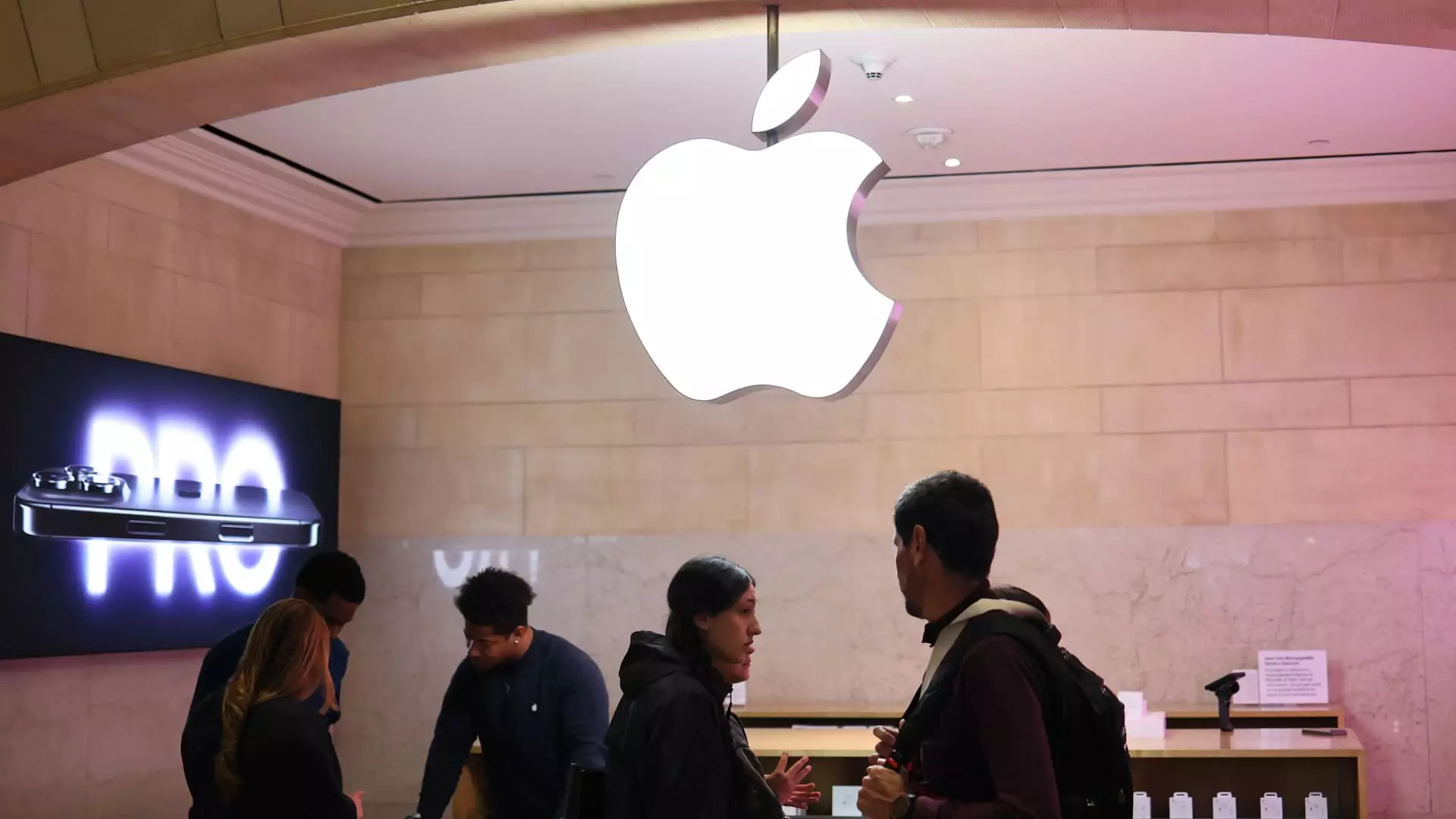In the complex world of global trade, few events have the potential to shake the foundation of major corporations quite like the introduction of tariffs. One of the most significant players in the tech industry, Apple Inc., finds itself at the center of this storm, especially under the administration of President Donald Trump. While many may consider Apple to be a big enough entity to withstand such shocks, the reality is much grimmer. According to Dan Ives of Wedbush Securities, Apple’s exposure to these new tariff regimes could lead to a staggering 23% reduction in its price target, which he downgraded from $325 to $250. This isn’t simply a reflection of market sentiment; it underscores the fragility of the American tech landscape.
The ramifications of an aggressive tariff policy are not confined to the balance sheets of multinational corporations; they reverberate throughout the entire economy. At face value, higher tariffs may seem like a short-term tactic to shield American jobs, but as Ives keenly points out, they could inflict long-term damage to the U.S. tech sector, placing it a decade behind in innovation and global competitiveness. With an already depressed share price—30% off its 52-week high—it’s becoming increasingly clear that Apple is walking a precarious path.
The Cost of Dependence on China
Apple’s business model heavily relies on its manufacturing capabilities in China, with a staggering 90% of iPhones produced overseas. This heavy dependence makes Apple especially vulnerable to disruptive policy shifts. Ives’ analysis reveals that over 50% of Apple’s Mac products and between 75% and 80% of its iPads are also manufactured in China. This raises a fundamental question: just how resilient is Apple if the heart of its production is a target for tariffs?
Even with Apple’s commitment to invest $500 billion domestically over four years, the feasibility of translating this plan into action is murky at best. Shifting part of its supply chain to the U.S. isn’t just a matter of good intentions—it would require an estimated $30 billion and years of effort, resulting in a “major disruption in the process.” This doesn’t simply mean logistical headaches for Apple; it translates into increased costs that would inevitably be passed on to consumers.
A Real Threat to Consumer Demand
Ives warns that the outcome of this ongoing tariff battle could lead to drastic increases in consumer product prices. Imagine a scenario where the price point of a consumer favorite, the iPhone, escalates due to increased production costs stemming from tariffs. In this case, a $1,000 device could see its price surge, potentially deterring customers and affecting overall demand. The irony is thick: tariffs originally intended to protect U.S. manufacturing may lead American consumers to opt for cheaper alternatives, essentially undermining the very objectives of the policy.
The unpredictability of tariff rates creates an atmosphere ripe for “demand destruction,” as Ives aptly phrases it. If companies like Apple cannot offer clear forward guidance amid such uncertainty—an increasingly probable scenario given the current environment—consumer confidence will likely wane. This malaise could resonate throughout the entire tech sector and beyond.
The Analyst’s Dilemma
While Ives has downgraded Apple’s outlook, it’s intriguing to note that the bulk of Wall Street analysts remain bullish on the company. With over two-thirds of analysts rating Apple as a buy, it’s striking how opinion remains divided amid stark warnings of economic fallout. This dichotomy raises questions about the reliability of stock ratings and the inherent risks of elevating short-term gains over long-term stability.
For investors, this dissonance serves as a cautionary tale. Relying on technical analysis or even sentiment can be perilous when external variables—such as tariffs—can rapidly alter a company’s market trajectory. In a world increasingly shaped by uncertainty, the requirement for a robust strategic plan becomes undeniable.
Instead of dismissing these forecasts as mere speculation, stakeholders must engage in critical analyses of the geopolitical climate and its implications for American tech giants. If the current tariff slate remains unchanged, Apple faces not just a potential decline in stock price but an existential threat to its operational framework. The stakes are high, and the road ahead is murky for one of America’s most storied companies.

